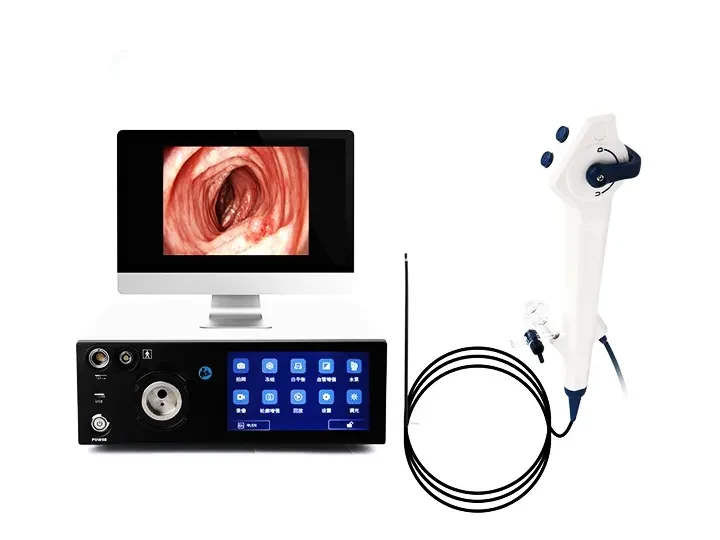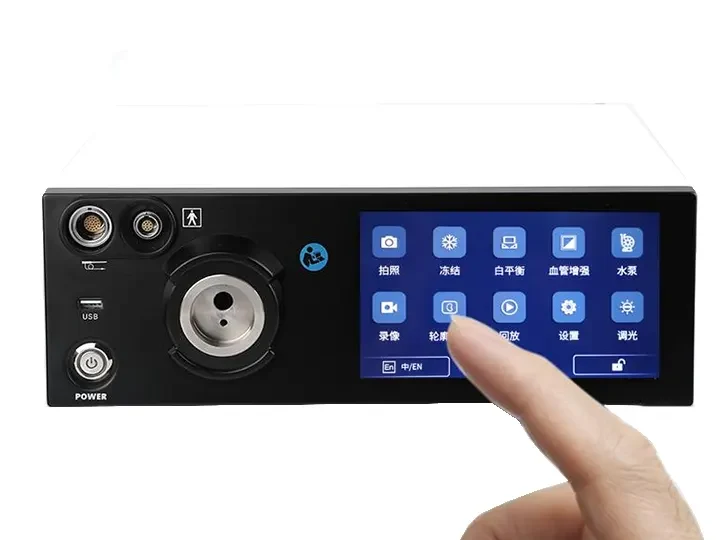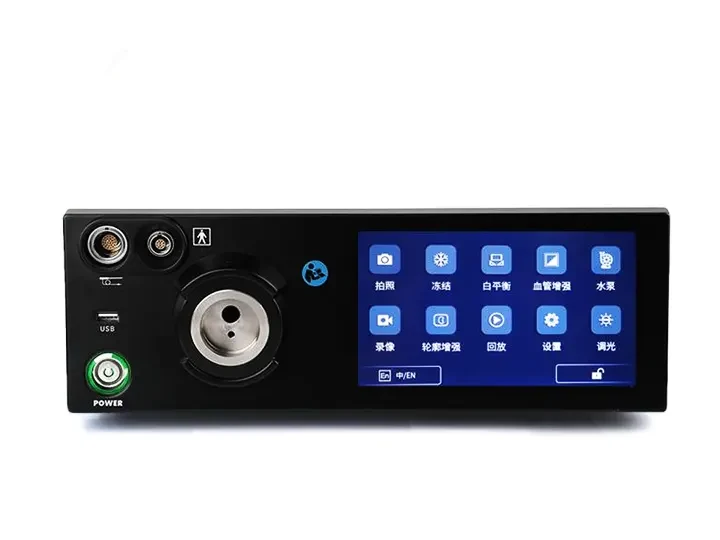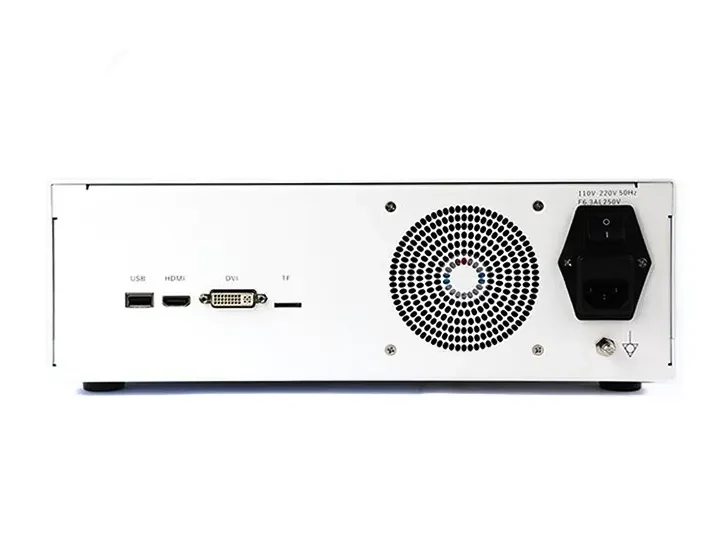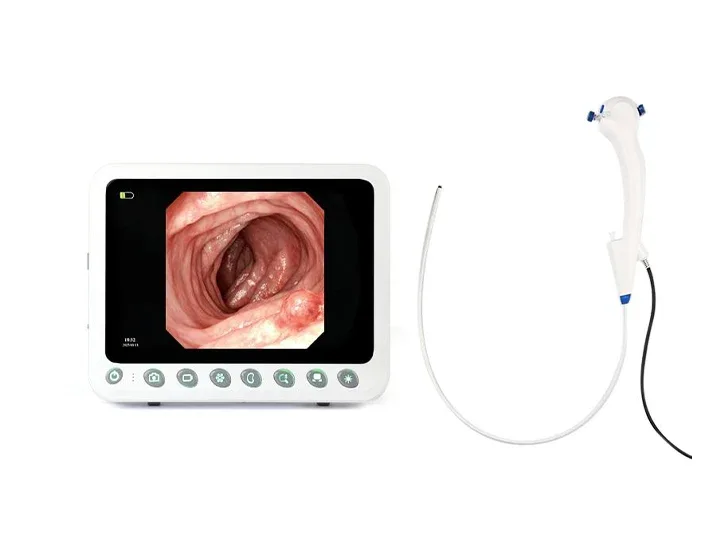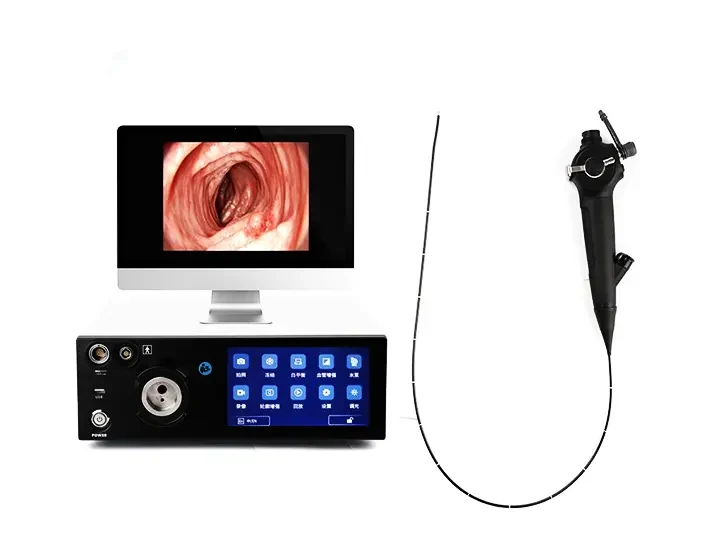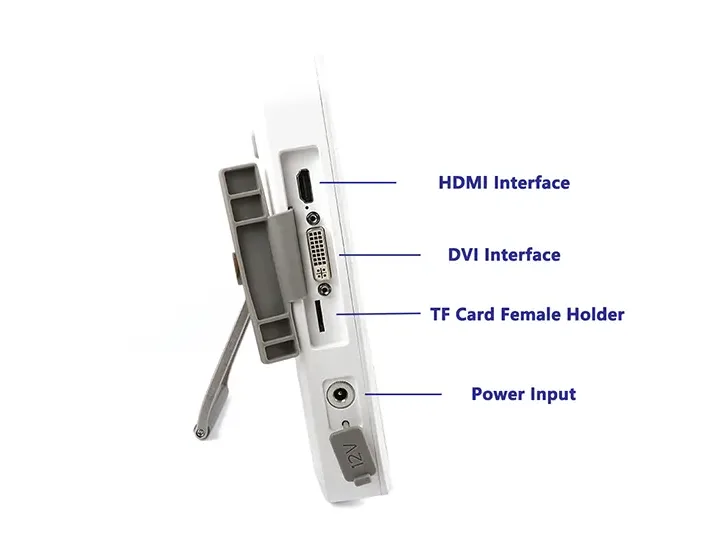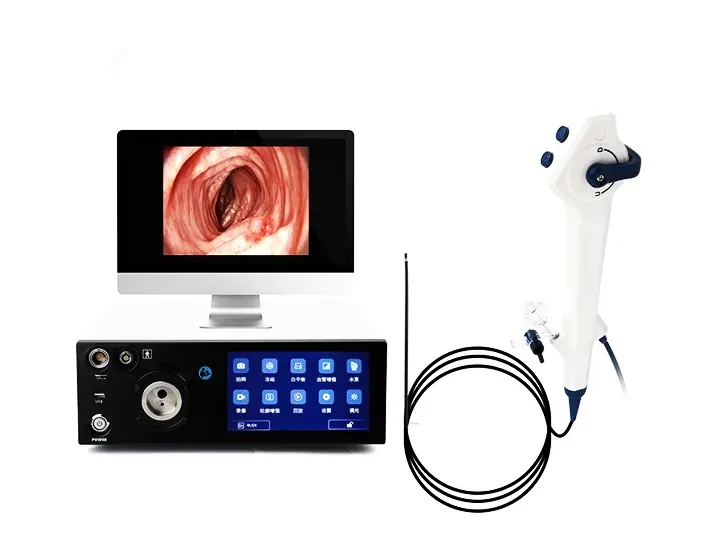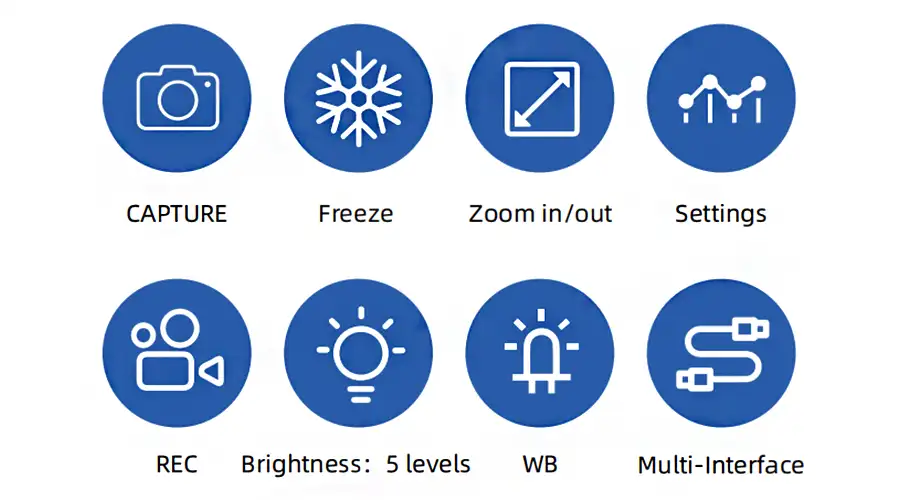
Strong Compatibility
Compatible with Gastrointestinal Endoscopes, Urological Endoscopes, Bronchoscopes, Hysteroscopes,Arthroscopes, Cystoscopes, Laryngoscopes, Choledochoscopes, Strong Compatibility.
Capture
Freeze
Zoom In/Out
Image Settings
REC
Brightness: 5 levels
WB
Multi-Interface
1920 1200 Pixel Resolution Image Clarity
With Detailed Vascular Visualization
for Real-Time Diagnosis
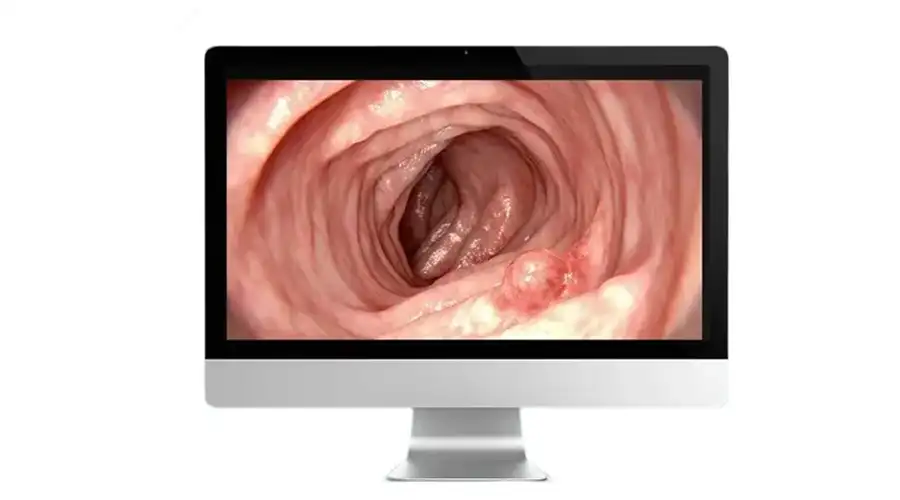
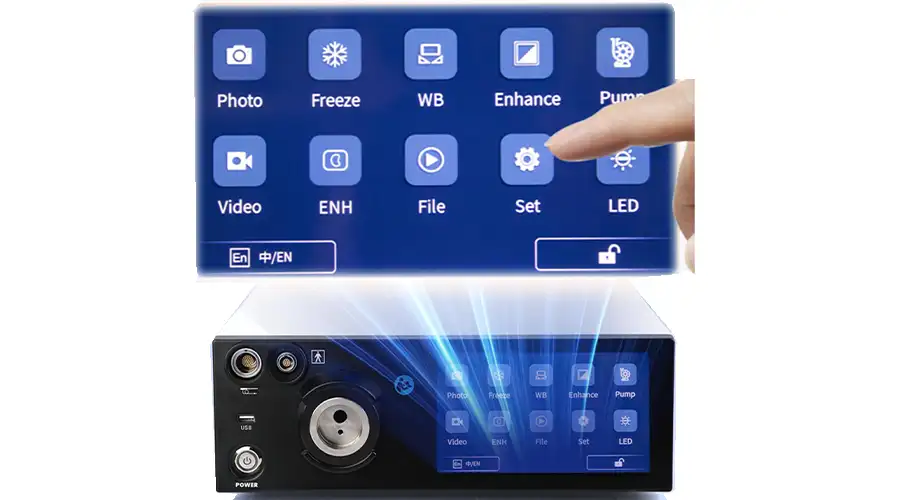
High Sensitivity High-Definition Touchscreen
Instant Touch Response
Eye-comfort HD display
Dual LED Lighting
5 adjustable brightness levels, Brightest at Level 5
gradually dimming to OFF
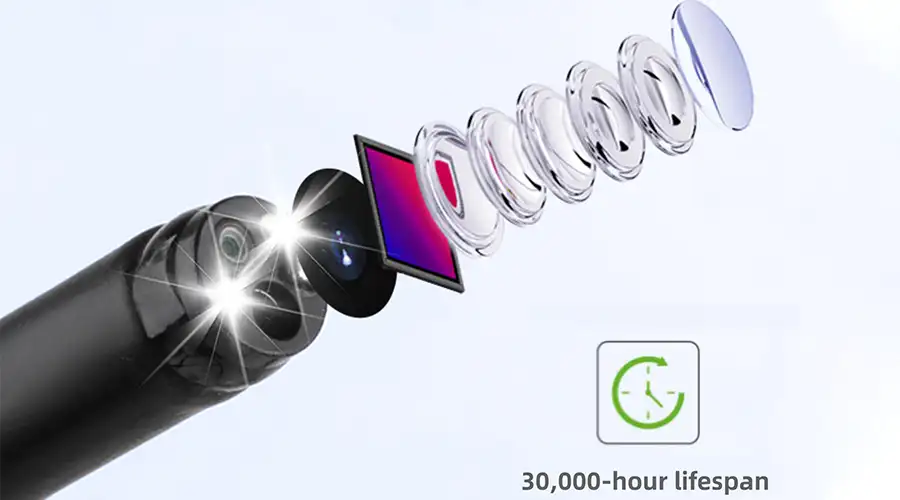

Brightest At Level 5
Brightness: 5 levels
OFF
Level 1
Level 2
Level 6
Level 4
Level 5
Vision Clarity For Confident Diagnosis
High-definition digital signals combined
with structural enhancement and color
enhancement technologies ensure
every image is crystal clear
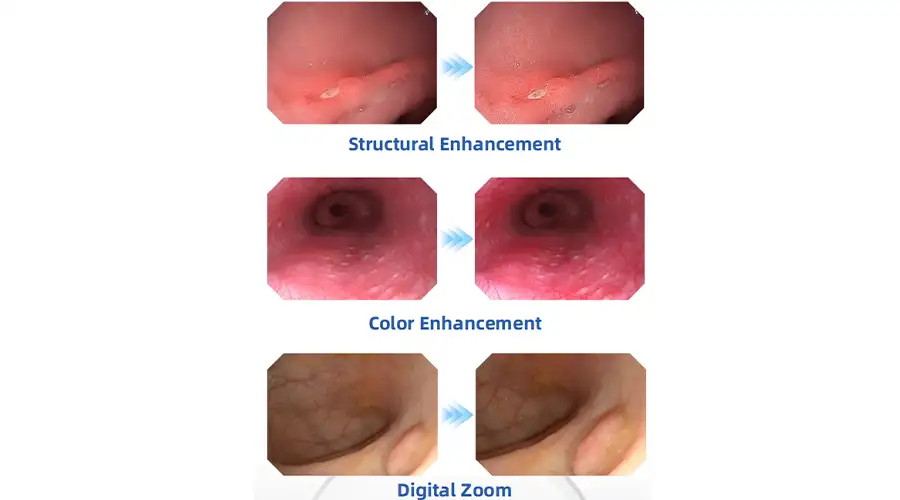
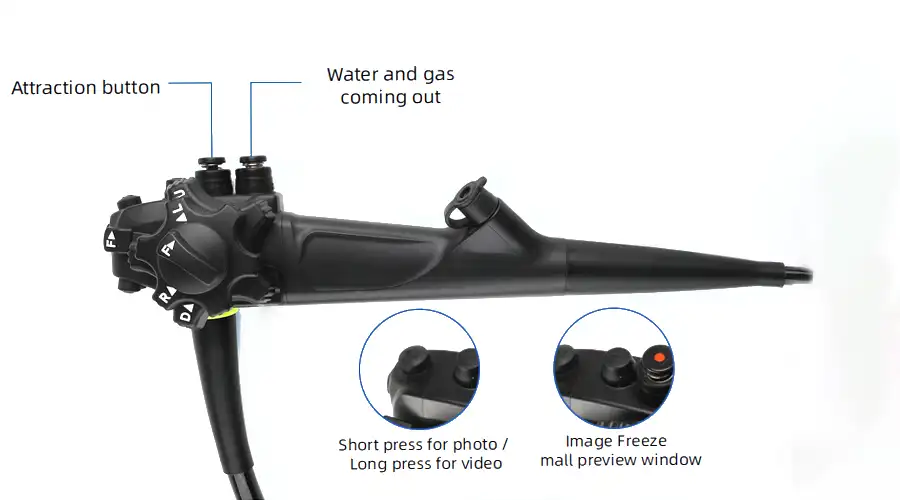
Lightweight Handpiece
Superior handling for effortless operation
Newly upgraded for exceptional stability
Intuitive button layout enables
precise and convenient control
1. Product definition and classification
Reusable bronchoscope refers to a bronchoscope system that can be used multiple times after professional disinfection and sterilization, which belongs to the category of flexible endoscopes. According to functional characteristics, it can be divided into:
Diagnostic bronchoscope
Standard outer diameter: 4.9-6.0mm
Working channel: 2.0-2.8mm
Mainly used for diagnostic operations such as inspection and biopsy
Therapeutic bronchoscope
Outer diameter: 5.5-6.3mm
Working channel: ≥3.0mm
Supports interventional treatment such as laser and cryotherapy
Ultrasound bronchoscope (EBUS)
Integrated ultrasound probe (7.5-12MHz)
Used for mediastinal lymph node assessment
2. Core structure and technical parameters
Optical system
Field of view: 80°-120°
Depth of field: 3-50mm
Resolution: ≥100,000 pixels (HD type can reach 500,000 pixels)
Mechanical properties
Bending angle:
Upward bend: 120°-180°
Downward bend: 90°-130°
Torque transmission efficiency: ≥85%
Working channel
Pressure resistance: ≥3bar (therapeutic type)
Surface treatment: PTFE coating reduces friction coefficient
III. Key technical features
Mirror body material
Outer layer: polyurethane/Pebax composite material (corrosion resistance, flexibility)
Inner layer: stainless steel spiral tube (torque transmission)
Joint: special hinge structure (200,000 bending life)
Sealing technology
Fully waterproof design (IPX8 standard)
Double O-ring seal at key parts
Optical innovation
The latest model adopts:
4K CMOS sensor (1/4 inch)
Dual-wavelength NBI technology (415/540nm)
IV. Disinfection and sterilization management
Standard process
Key indicators
Sterilization effect: reach SAL 10⁻⁶
Disinfectant compatibility test:
Disinfectant type Maximum tolerance time
Phthalaldehyde ≤20 minutes
Peracetic acid ≤10 minutes
Life management
Average service life: 300-500 times
Mandatory scrapping standard:
Pixel loss>30%
Bending mechanism failure
Sealing test failure
V. Clinical application scenarios
Diagnostic application
Lung cancer diagnosis:
Combined autofluorescence detection of early cancer (sensitivity 92%)
Biopsy accuracy: central type 88%, peripheral type 72%
Infectious diseases:
BALF lavage volume standard: 100-300ml
Interventional treatment
Typical treatment methods:
Technology Applicable diseases Success rate
Argon knife Central airway obstruction 85%
Cryotherapy Bronchial tuberculosis 78%
Stent placement Malignant airway stenosis 93%
Special applications
Pediatric bronchoscope:
Outer diameter 2.8-3.5mm
Minimum size for neonates (weight > 2kg)
ICU applications:
Bedside bronchoalveolar lavage
Difficult airway assessment
VI. Comparison with disposable bronchoscopes
Comparison dimensions Reusable bronchoscopes Disposable bronchoscopes
Single cost $300-800 (including disinfection) $500-1200
Image quality 4K ultra-high definition Usually 1080p
Operation feel Accurate torque transmission Relatively rigid
Environmental burden 0.5kg of medical waste generated each time 3-5kg of medical waste generated each time
Emergency standby Disinfection preparation time required Ready to use
VII. Typical product technical parameters
Olympus BF-1TQ290
Outer diameter: 6.0mm
Working channel: 3.2mm
Bending angle: 180° (upper) / 130° (lower)
Compatible treatment: laser power ≤40W
Fuji EB-530S
Ultrasonic frequency: 7.5MHz
Puncture needle diameter: 22G
Doppler function: supports blood flow detection
Pentax EB-1170K
Ultra-fine outer diameter: 4.2mm
Adjustable distal hardness
Compatible with electromagnetic navigation
VIII. Maintenance and management points
Daily maintenance
Leak detection after each use (pressure 30-40kPa)
Channel brushing times ≥10 times/channel
Storage environment: humidity 40-60%RH
Quality control
Monthly inspection items:
Image resolution test card
Bending angle measurement
Illuminance detection (≥1500lux)
Cost control
Maintenance cost analysis:
Maintenance type Average cost frequency
Clip tube replacement $800 50 times/piece
CCD replacement $3500 200 times/piece
Bend repair $2000 300 times/lens
IX. Latest technological progress
Material innovation
Self-cleaning coating (TiO₂ photocatalysis)
Antibacterial polymer (containing silver ions)
Intelligent functions
Real-time AI assistance:
Automatic identification of bronchial bifurcation (accuracy 98%)
Intelligent estimation of bleeding volume
3D path reconstruction:
Virtual navigation based on CT images
Sterilization technology
Low-temperature plasma sterilization (<50℃)
Rapid sterilization cycle: ≤30 minutes
X. Market status and development
Global market data
Market in 2023 Market size: $1.27 billion
Main manufacturers’ share:
Olympus: 38%
Fuji: 25%
Pentax: 18%
Technology development trend
Modular design (replaceable functional head end)
Wireless transmission (battery-powered)
Augmented reality guidance
Clinical application trend
Popularization of lung cancer screening
Refined interventional treatment
Routine bedside operation
Summary
Reusable bronchoscopes are still the mainstream choice in the field of respiratory intervention due to their excellent image quality, flexible operation performance and high economy. With the development of material science and intelligent technology, the new generation of products is evolving towards "more durable, smarter and safer". Medical institutions need to consider the following when making choices:
Frequency of use and cost-effectiveness
Disinfection and sterilization capabilities
Maintenance guarantee system
In the next five years, driven by strict infection control requirements and technological innovation, reusable bronchoscopes will continue to maintain a market share of more than 60%.
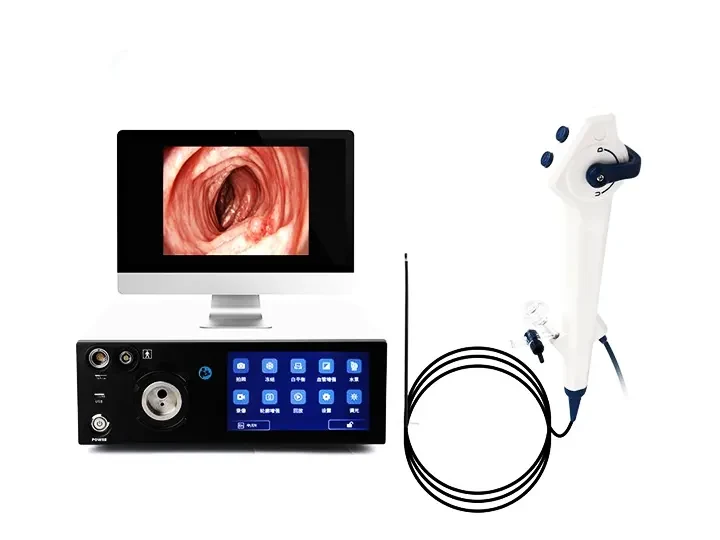
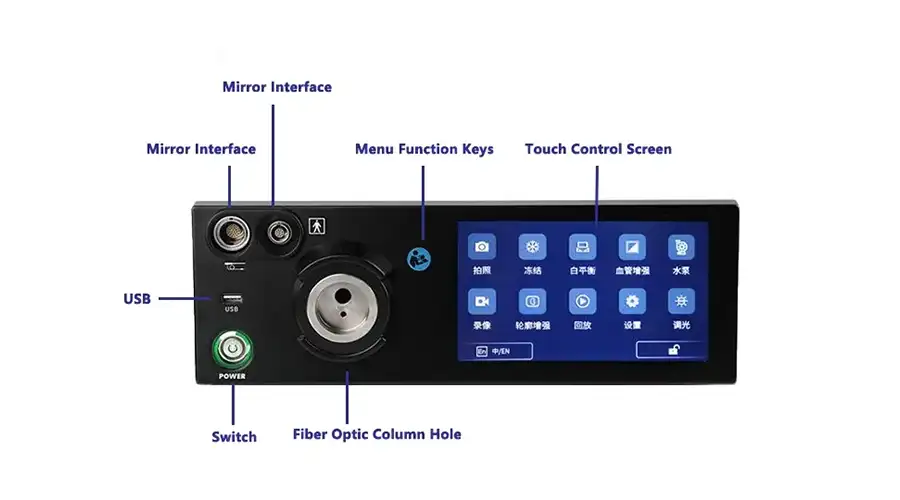
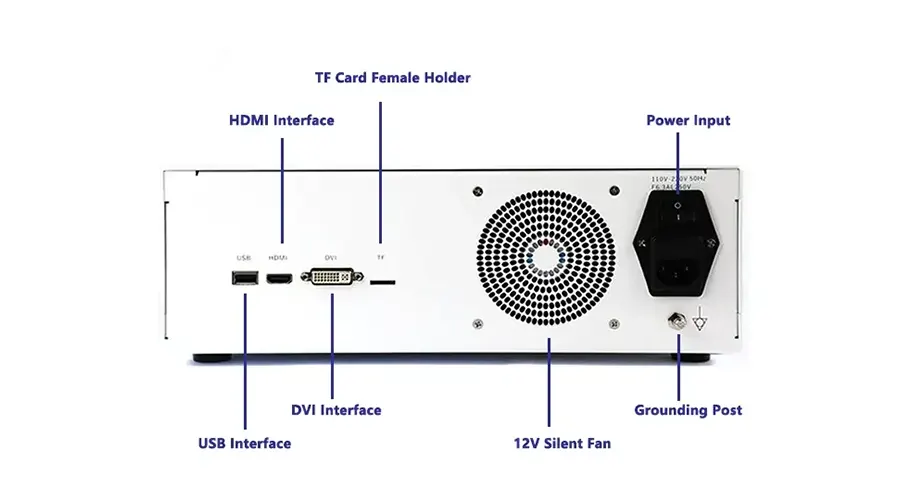
Faq
-
How does Medical Repeating Bronchoscope ensure disinfection effectiveness?
Made of high temperature and high pressure resistant materials, supporting sterilization treatment at 134 ℃, combined with enzyme washing, soaking, and drying for full process disinfection, to ensure compliance with sterile standards and eliminate the risk of cross infection.
-
What is the lifespan of Medical Repeating Bronchoscope?
Under normal use, 500-800 inspections can be completed, and the actual lifespan depends on operational standards and maintenance frequency. Regular testing of airtightness and imaging clarity is required.
-
What should I do if the image of the Medical Repeating Bronchoscope appears blurry?
First, check if the lens is contaminated and clean it with specialized lens paper; If it is still blurry and needs to be sent for inspection, it may be due to fiber breakage or CCD aging, requiring professional repair and replacement.
-
What are the advantages of repeating bronchoscopes over disposable products?
Better imaging quality, better maneuverability, lower long-term usage costs, and compliance with environmental requirements, suitable for medical institutions with high-frequency inspections.
Latest articles
-
How XBX Cystoscope Supplier Ensures Quality and Precision for Hospital Procurement
Discover how the XBX Cystoscope Supplier provides hospitals with high-precision, OEM-ready endoscopy systems built for reliability, safety, and consistent imagi...
-
How XBX Bronchoscope Factory Delivers Reliable OEM Systems
Discover how the XBX Bronchoscope Factory ensures quality and reliability through advanced OEM manufacturing, optical precision, and strict quality control.
-
How XBX Laparoscope Minimizes Surgical Trauma in Abdominal Surgery
Discover how the XBX Laparoscope reduces surgical trauma through precision imaging, minimal incisions, and faster recovery in modern abdominal procedures.
-
How XBX Hysteroscope Detects and Removes Uterine Polyps
Discover how the XBX Hysteroscope enables precise detection and removal of uterine polyps, improving accuracy, safety, and comfort in women’s health care.
-
What Is an XBX Flexible Ureteroscope for Stone Removal?
Learn how the XBX flexible ureteroscope improves access, visibility, and efficiency in ureteral stone management with 4K imaging and ergonomic control.
Recommended products
-
XBX Portable medical endoscope host
The XBX Portable Medical Endoscope Host offers high-definition imaging for accurate diagnostics, wit
-
XBX Repeating ENT Endoscope Equipment
Reusable ENT Endoscopes are medical optical instruments designed for examination of the ears, nose,
-
XBX Medical Repeating Bronchoscope
Reusable bronchoscope refers to a bronchoscope system that can be used multiple times after professi

